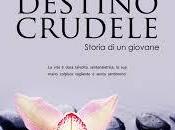
memories of a winter’s garden

Ingrid Dee Magidson è un’artista statunitense originaria di Dallas, Texas. Vive e lavora ad Aspen, Colorado, dove ha il suo studio e crea le sue stupefacenti opere d’Arte. Famosa in tutto il mondo, le sue opere fanno parte di notevoli collezioni fra cui: Antonio Banderas & Melanie Griffith, NYC; Jackie Bezos, Seattle; Sarah & Gideon Gartner, NYC; and Sam & Cheryl Wyly, Aspen/Dallas. Ideatrice di una spettacolare tecnica “a strati” su cui si basa il suo lavoro, Ingrid rende possibile un viaggio attraverso il Tempo, aprendo una finestra ideale su epoche passate, offrendo un passaggio di interscambio fra i personaggi protagonisti e lo spettatore che ammira le sue opere. La sua vena creativa è tenacemente percorsa da una fede illimitata nella sensibilità soggettiva dell’artista, tramite attraverso cui i suoi personaggi parlano e raccontano i loro mondi e le loro emozioni. La sua idea di partenza è quella di credere fortemente nei soggetti che ritrae, nelle loro vite, nelle loro imprese; in questo modo l’artista getta un ponte spazio temporale che lo spettatore finale potrà varcare per inoltrarsi nel vero cuore dell’opera. La sua mano è solo un mezzo che permette all’Arte di restituire a noi la Bellezza e la Verità dei protagonisti ritratti, è un salto verso la ri-creazione di un passato svanito eppure ancora presente e parlante, vivente, pregno di vita propria. Una magia che lascia senza fiato e fa rabbrividire d’emozione. Ogni volta che si osserva un quadro di Ingrid, ecco che la vita (ri)appare e (ri)viene al mondo, ritorna a noi prima come un sogno, poi come un’ineludibile materia pittorica, materica, scansionando tutti i sensi, che si estendono e diventano sei. Il sesto senso è l’ultimo stadio a cui si approda dall’osservazione di un quadro della Magidson e se si riesce ad oltrepassarlo è possibile, molto probabile, che ci si addormenti in un trance profondo. Ipnotici, delicati, ammalianti, enigmatici, profondi, i personaggi della Magidson ci guardano tendendoci una mano, e infine ci parlano dalla loro nuova incarnazione. Ho intervistato questa straordinaria artista per WSF. Enjoy.
Ingrid Dee Magidson is an american artist born in Dallas, Texas. She lives and works in Aspen, Colorado, where she’s got her studio and creates her beautiful work. Ingrid’s work is in notable collections throughout the world, including: Antonio Banderas & Melanie Griffith, NYC; Jackie Bezos, Seattle; Sarah & Gideon Gartner, NYC; and Sam & Cheryl Wyly, Aspen/Dallas. Inventor of a spectacular layering technique on which her work is based, Ingrid allows a journey through the time opening an ideal window on past times, offering a passage of interchange between the character and the viewer. Her creative vein is strongly pervaded by an unlimited faith in the artist’s sensibility through which her characters talk and tell about their worlds and emotions. Her starting idea is to believe in the subjects she depicts, in their lives and deeds; doing this the artist creates a continuum space time connection the viewer can cross to enter the heart of the work. Her hand is just a mere means which allows the Art to give us back the Beauty and the Truth of the depicted characters, it’s a jump toward the re-creation of a vanished past that’s still present, talking and has a life of its own. Her magic takes the breath away and makes jump. Every time you observe an Ingrid’s piece of work, life (re)appears and comes into the world again, it comes back to us like a dream first, then like an inescapable pictorial matter, material, scanning the whole expanded senses that become six. The sixth sense is the last stage you come to when observing a Magidson’s piece of Art. If you are able to cross it, it is possible you go into a trance. Hypnotic, delicate, haunting, enigmatic, deep, the subjects of Ingrid look at us holding out one hand, finally talking us about their new incarnation. I interviewed this extraordinary artist for WSF. Enjoy.

Ingrid Dee Magidson
FG. Benvenuta su WSF, Ingrid. Grazie di essere qui. Quando hai iniziato la tua carriera artistica e come definiresti la tua Arte?
I. La mia carriera si è sviluppata in due momenti. Entrambi i miei genitori sono artisti e spesso da bambina mi portavano a visitare musei. Una volta mi dissero che ci sono molte più opere d’arte nelle cantine che sui muri. Questo mi portò a chiedermi se c’era un modo di portare quelle opere alla luce in modo che più gente potesse vederle. Questo pensiero non mi lasciò mai. Mi dedicai a molte altre attività fino a che iniziai a lavorare per una galleria d’arte di Aspen. Il proprietario è ora mio marito da sedici anni. Lavorare in una galleria mi fece stare a contatto con tantissimi artisti e con l’Arte. La mia idea originaria continuò a frullarmi nel subconscio fino al 2005, quando affiorò in superficie. In un susseguirsi di sperimentazione giunsi alla mia attuale tecnica basata sulla stratificazione di immagini rinascimentali su strati trasparenti. C’erano enormi difficoltà tecniche da superare.
FG. Qual’è il rapporto fra l’inconsistenza e gli elementi materici che adotti nel tuo lavoro? Qual’è il criterio di base nella scelta dei soggetti delle tue opere?
I. Tutti i soggetti che scelgo devono parlarmi. Mi sono state commissionate opere con soggetti che non mi emozionavano e sono stata costretta a rifiutare. Devo conoscere i soggetti, storicamente e personalmente. Per me sono reali e mi dicono come essi desiderano essere presentati nella loro nuova incarnazione tramite la mia Arte. Per loro è una specie di finestra da cui guardare l’esterno, e per noi in cui affacciarci. Io incapsulo il loro spirito negli strati del mio lavoro. Mi auguro questo non suoni un po’ folle ma io di notte lascio accesa la musica classica nel mio studio, per non farli sentire soli.

memories
FG. Cos’è per te l’Arte? Personaggi storici, gente che viene dal passato sono i tuoi soggetti preferiti. Perché?
I. L’Arte è la comunicazione di espressività ed emozione fra l’oggetto e lo spettatore. Una volta che l’artista crea l’oggetto (l’opera), lui o lei viene liberato. Ecco perché possiamo guardare un’opera d’arte di cento anni fa, non avere idea di chi sia l’artista, ed emozionarci ancora nel guardarla. L’Arte parla attraverso i secoli tanto facilmente quanto lo è per noi parlarci l’un l’altro di persona. I miei personaggi preferiti sono quelli di donne forti. Uso spesso figure di regine e principesse nel mio lavoro. Hanno dovuto superare enormi avversità talvolta, per fare ciò che hanno fatto. Mi ispirano e auspico ispirino anche coloro che le ritrovano nei miei quadri. Utilizzo anche figure maschili, per le stesse ragioni. Francois I è un personaggio che mi affascina. Era un amante dell’Arte e ha portato la Monna Lisa alla Francia. Molti dei miei soggetti non sono molto conosciuti e spesso ritraggo bambini. La loro innocenza mi attrae, così come la loro forza.
FG. Vuoi parlarci della tua peculiare tecnica artistica e del tuo recente lavoro sperimentale?
I. La mia tecnica è complessa. Uso strati multipli trasparenti per costruire immagini composite. Tra gli spazi posiziono oggetti che mi parlano, come spartiti musicali, farfalle, tessuti, giocattoli, persino grucce se il lavoro lo richiede. Il mio lavoro più recente si discosta leggermente da questo. Lo strato posteriore ha il soggetto in bianco e nero e gli oggetti vengono stratificati davanti ad esso. In questo modo risultano più ammalianti e delicati. Forse, il mio preferito di questo gruppo è “Memories of a winter’s garden”.
Intervista e traduzione di Federica Galetto
FG: Welcome on WSF, Ingrid.Thank you for being here. When did you start your artistic career and how would you define your Art?
IM: My career developed in two stages. Both my parents are artists and often took me to museums as a child. Once they told me there are far more pieces in the basement than on the walls. That got me thinking, was there a way to bring these painting into the light so more people could see them. This thought never left me. I went through many other careers until I began working for an art gallery in Aspen. The owner is now my husband of 16 years. Being in a gallery exposed me to a lot of art and artists. My original idea continued to stir in my subconscious until 2005 when it burst to the surface. In a flurry of experimentation I came up with my current technique of layering renaissance images on transparent layers. There were massive technical hurtles to overcome.
FG: What’s the relationship between the insubstantial and the material elements used in your work? What’s the basic criteria you adopt when choosing subjects in your pieces?
IM: All the subjects I choose must speak to me. I’ve been offered commissions of certain subjects that didn’t move me and I was forced to turn them down. I get to know the subjects, historically and personally. They are real to me and tell me how they want to be presented in their new incarnation in my art. It is a kind of window for them to look out of and for us to look in at. I encapsulate their spirit into the layers of my work. I hope it doesn’t sound too crazy, but I leave classical music going in my studio at night so they don’t get lonely.
FG: What’s art for you? Historic characters, people coming from the past, are your favorites. Why?
IM: Art is the communication of expression and emotion from object to viewer. Once the artist creates the object (artwork), he or she is released from this loop. That is why we can look at artwork from hundreds of year ago, have no idea who the artist was, and still be moved by the work. Art speaks across the centuries as easily as we speak to each other in person. My favorite characters are those of strong women. I often use queens and princesses in my work. They overcame great odds sometimes to do what they did. They inspire me and hopefully those who see them again in my work. I do use men as well, for the same reasons. Francois I is a fascinating character to me. He was a lover of art and brought the Mona Lisa to France. Many of my subjects are not well known, and I often use children as subjects. Their innocence appeals to me as does their strength.
FG: Would you please tell us something about your peculiar technique and your recent experimental work?
IM: My technique is complex. I use multiple transparent layers to build a composite of images. In the spaces between, I place objects that speak to me such as music sheets, butterflies, fabric, toys, even coat hangers if the work calls for it. My most recent work is a slight departure from this. The back layer has the subject in black and white and the objects are layered in front of it. They are more haunting and subtle. Perhaps my favorite of this group is called “Memories of a Winter’s Garden.”
Sito web: http://www.ingridmagidson.com/
Blog: http://blog.ingridmagidson.com/


destiny’s memory

Whispered Memories

Queen of masquerade
Tutte le immagini e i video pubblicati in questo articolo appartengono a Ingrid Dee Magidson © All rights reserved.
http://www.ingridmagidson.com/
Filed under: Pittura, Prospettive, scritture, traduzioni, visioni visive Tagged: 2012, arte, Dinamiche, federicagaletto, il nero delle forme, Inediti, Ingrid Magidson, interviste, interviste bilingue, Pittura, scritture, visioni, WSF

![[Rubrica: Italian Writers Wanted #12]](https://m22.paperblog.com/i/289/2897898/rubrica-italian-writers-wanted-12-L-cIVqIF-175x130.png)
![Books Babies [Recensione]: piccola mercante sogni Maxence Fermine](https://m21.paperblog.com/i/289/2898103/books-babies-recensione-la-piccola-mercante-d-L-O9fu8k-175x130.jpeg)




